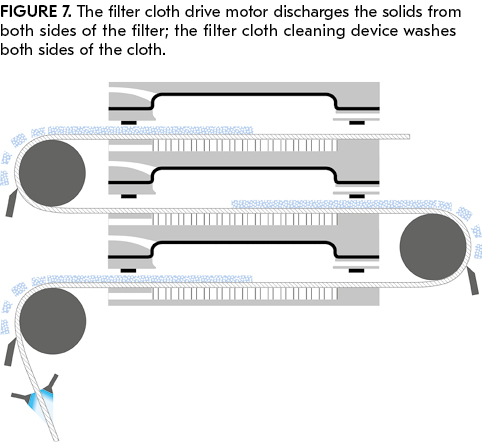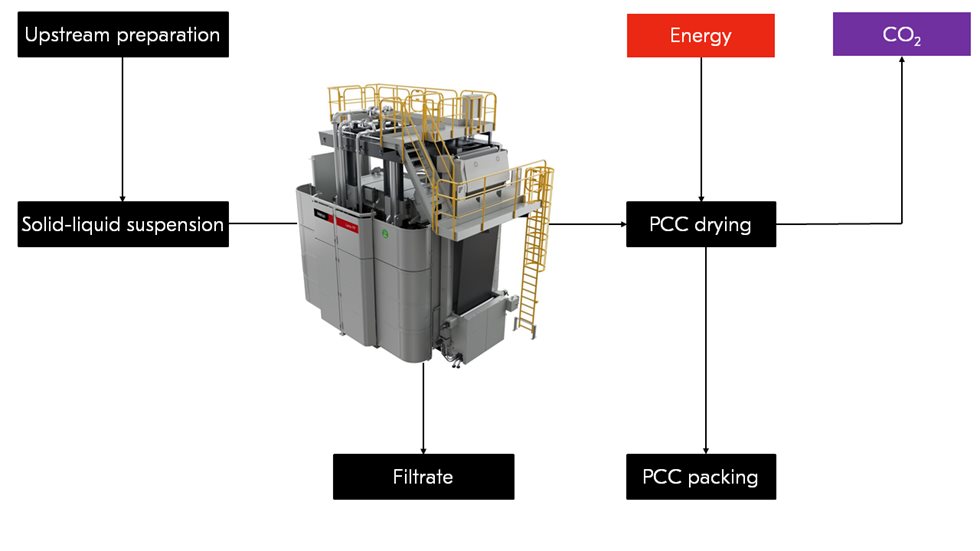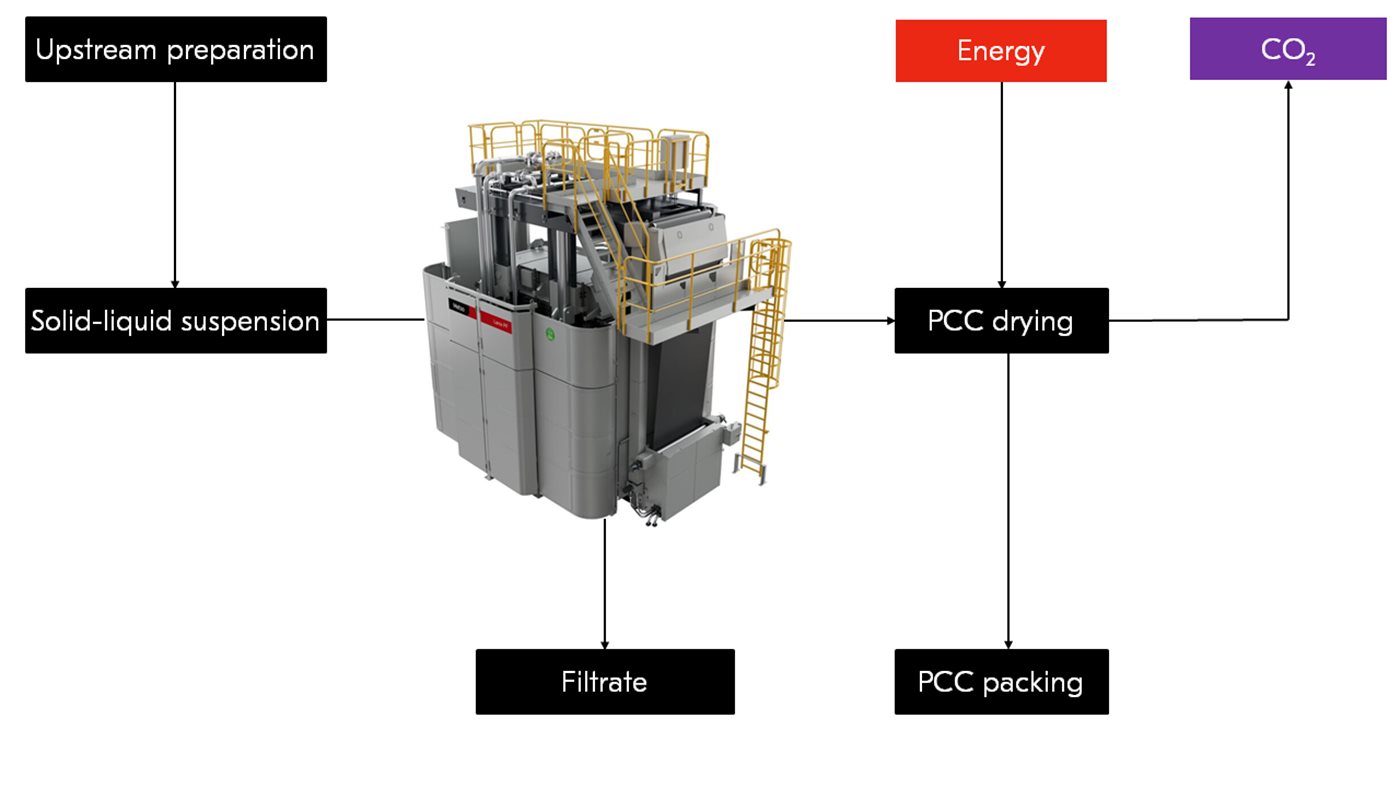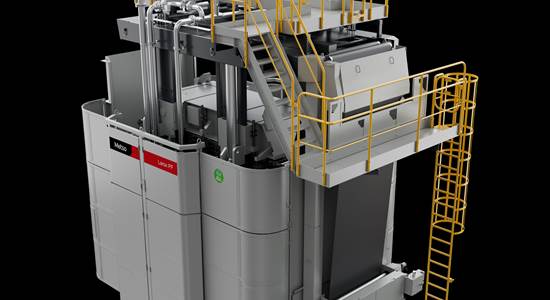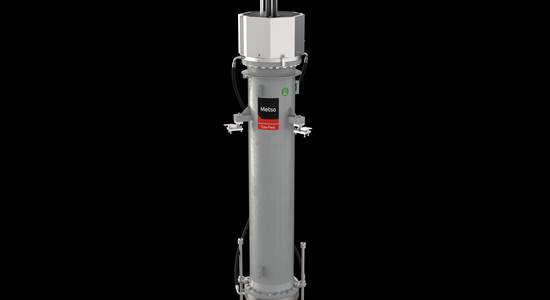The Larox PF filter has transformed many industrial processes, for example in fine chemicals, pigments, modified starch, and pharmaceutical fermentation broth. The primary dewatering mechanism is pressure filtration, in which a pressing force of up to 16 bar can be used. The unique manner in which the cake is formed and subsequently sustained means that other operations, such as drying, are as efficient and effective as possible.
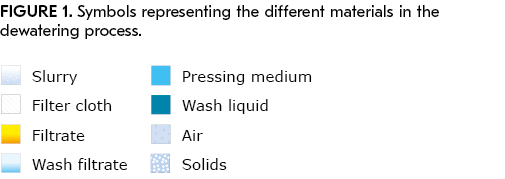
Feeding
When the plate pack is closed, a set of chambers is formed and PCC suspension enters these through feeding pipes. A filter cake builds up and filtrate passes through the filter cloth, support grid, and filtrate hoses.
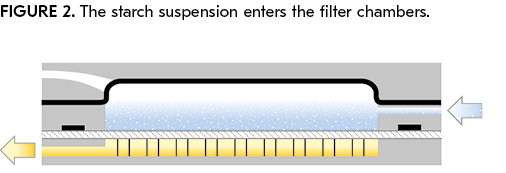
First pressing
The pressing medium enters the space behind the diaphragm under high pressure. The diaphragm squeezes the cake, forcing more liquid out.
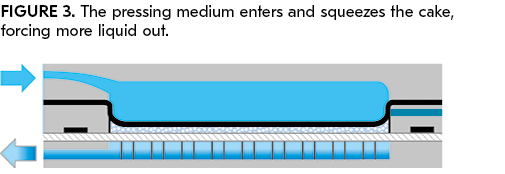
Optional: Solids washing
After the pressing pressure is relieved, wash water enters the chamber through the same feed pipe as the suspension, filling the filter chamber while forcing the pressing medium out from behind the diaphragm. The water then passes through the filter cake solids, washing out impurities before exiting the filter chamber through the filter cloth to the filtrate collection line.
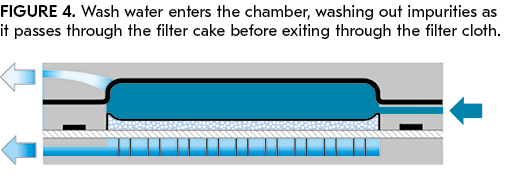
Optional: Second pressing
A second squeeze with the pressing diaphragm forces the wash water to pass through the cake in a uniform front. Because the cake is uniform and unstressed, this minimizes the presence of thin or thicker areas that may cause short-circuiting or bypassing. This ensures the best possible cake washing and the lowest possible water consumption.
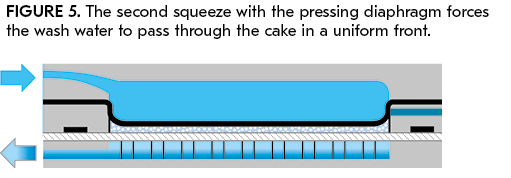
Solids drying
Compressed air enters the chamber through the feed port, pushes the diaphragm up, and passes through the cake in a uniform front in much the same way as the wash water. The airflow through the highly uniform cake reduces the residual moisture in the cake to the lowest possible level and also removes any remaining filtrate from the filtrate area.
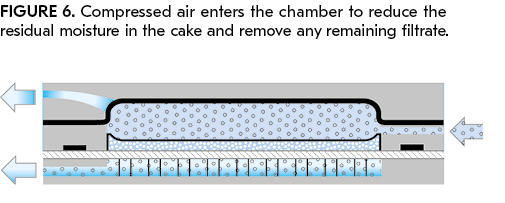
Solids discharge and filter cloth washing
When the drying step is complete, all the filter chambers open up simultaneously. The filter cloth drive motor starts to move the endless filter cloth, discharging the solids from both sides of the filter. In this way, all of the PCC is passing forward through the process at all times, with no material hold-up.
At the same time, the filter cloth cleaning device washes both sides of the cloth in order to maintain a consistently high level of filtration efficiency and to remove any residual PCC.
